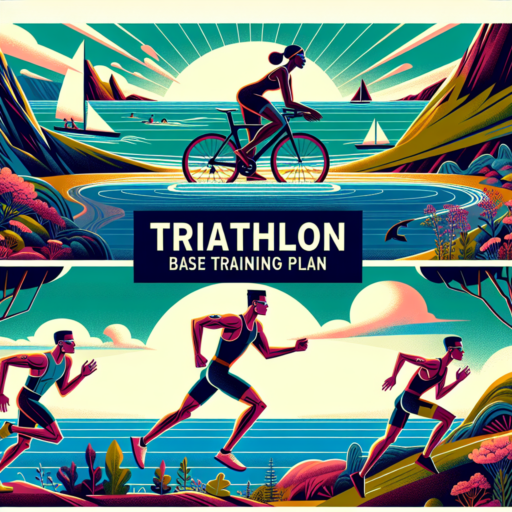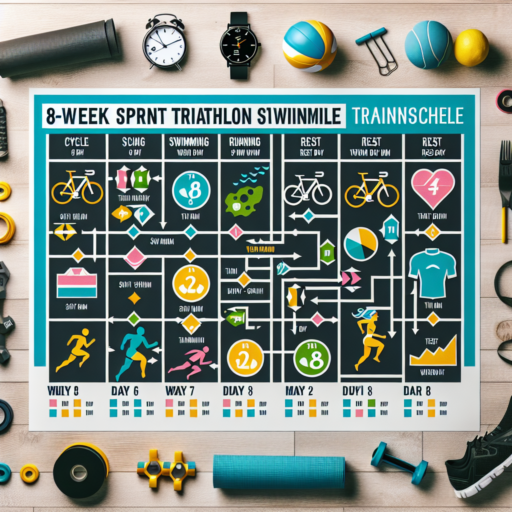How many weeks to train for Olympic triathlon?
Training for an Olympic triathlon is a commitment that requires careful planning and dedication. The typical preparation time can vary widely depending on your current fitness level, experience, and goals. Generally, athletes might plan a training schedule that spans anywhere from 12 to 20 weeks. This range allows for ample time to build up endurance, hone technique across swimming, cycling, and running, and allows for recovery periods to prevent overtraining and injuries.
Beginning competitors with a base level of fitness might look towards the longer end of this spectrum. Starting with a 20-week plan can provide the necessary runway to gradually increase the intensity and volume of workouts. This approach helps in ensuring that all three disciplines of the triathlon are given adequate focus, allowing for a steady gain in strength and stamina.
On the other hand, more experienced triathletes or those with a higher level of baseline fitness may find a shorter, more intensive preparation period of around 12 weeks to be sufficient. This timeframe is typically for athletes who have previously completed triathlons or have maintained a higher level of conditioning. An accelerated program would focus on fine-tuning performance, improving speed, and strategic race planning.
Can you train for Ironman in 12 weeks?
Embarking on the journey to complete an Ironman triathlon is a formidable task, demanding significant commitments in terms of training and preparation. Typically, athletes spend months, if not years, preparing for this ultimate endurance challenge. However, the question arises: is it feasible to train for an Ironman in just 12 weeks?
For seasoned athletes with a solid foundation in long-distance swimming, biking, and running, a 12-week training plan can be a rigorous yet achievable goal. Such athletes usually possess the endurance and mental fortitude required for Ironman training’s intensity. Nevertheless, this compressed timeframe demands a highly structured and disciplined approach to training. It necessitates careful attention to nutrition, recovery, and injury prevention to withstand the rigors of accelerated preparation.
Beginners or those with limited triathlon experience may find the 12-week timeframe challenging. For these athletes, focusing on building endurance and technical skills across the three disciplines is crucial. Incorporating strength training and flexibility exercises can also fortify the body against the demands of continuous, long-duration workouts. While achieving race readiness in such a brief period is ambitious, proper guidance from a seasoned coach can make a significant difference in one’s preparedness.
No se han encontrado productos.
How many days rest before Olympic triathlon?
Preparing for an Olympic triathlon involves intense training and strategic rest days to ensure peak performance on race day. Experts often suggest a taper period of rest, involving a reduction in training volume without completely stopping exercise. This taper period can vary, but a common approach is to start tapering around 7 to 10 days before the Olympic triathlon. This period allows athletes to recover from the cumulative fatigue of training while maintaining fitness levels.
Determining the exact number of rest days or light training days within this tapering period depends on the athlete’s physical condition, training history, and experience. Most coaches recommend a balance of active recovery, light training sessions, and complete rest days. For instance, during the final week leading up to the event, athletes might reduce their training volume by 40-60%, incorporating one or two days of complete rest, particularly in the 48 hours preceding the triathlon. This reduction helps maintain muscle memory while ensuring muscles are fully rested.
Specifically, in the last days before the Olympic triathlon, a focus on hydration, nutrition, and mental preparation takes precedence over physical strain. Athletes might engage in activities such as light swimming, cycling, or jogging, which are beneficial for keeping the body loose without causing undue stress. It’s crucial for athletes to listen to their bodies during this time, avoiding anything that might risk injury or overexertion. Ultimately, the goal of this rest period is to arrive on race day feeling energized, well-rested, and ready to perform at the highest level.
How many hours a day do triathletes train?
Training for a triathlon is an impressive feat that requires dedication and a rigorous schedule. Typically, the amount of time a triathlete dedicates to their training varies significantly depending on their experience level, the distance of the triathlon they are preparing for, and their personal goals. However, a common question that arises among aspiring participants is, «How many hours a day do triathletes train?»
Average triathletes, those balancing training with day jobs and family commitments, might find themselves dedicating anywhere from 1 to 3 hours daily to their training regimen. This time is often divided among the three sports—swimming, biking, and running—across different days of the week to ensure a comprehensive preparation while also allowing for necessary recovery time. It’s not only the quantity of training but the quality that makes a difference in a triathlete’s performance.
When diving deeper into the training schedules, it’s crucial to highlight the variation leading up to competition seasons. In the peak training periods, the daily hours can increase significantly, with some athletes reporting 4 to 6 hours of training. This might include two disciplines per day or focusing intensively on one area that needs improvement. For instance:
- Swimming: Might range from 45 minutes to 2 hours, focusing on distance and technique.
- Biking: Can last between 1 to 4 hours, often emphasizing endurance.
- Running: Typically consists of 30 minutes to 2 hours, prioritizing speed and stamina.
These ranges underscore that there’s no one-size-fits-all answer to the daily training hours of a triathlete. Whether it’s gearing up for a Sprint, Olympic, Half-Ironman, or a full Ironman triathlon, the hours invested in training will reflect the personal benchmarks and aspirations of the athlete.




